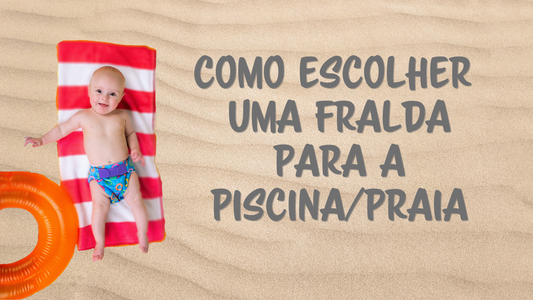Cloth diapers don't work! It's just leaks!
Leakage happens with any type of diaper, when using both disposable and reusable diapers. It could be pee or poop leaks. The first is easier to clean, the second not so much. Leaks are part of it, it's a normal thing. I can assure you, that pooping explosion every parent fears is less likely to happen if you use cloth diapers. You can trust me!
If you use disposable diapers, you must buy the diapers in the size corresponding to the baby. When he grows up, he will need a bigger diaper with more absorption. Even so, in large babies, the absorbency of disposable diapers may not be sufficient. At that point, many parents turn to cloth diapers to solve nighttime leaks. Yes, you read well. When there are leaks due to lack of absorption, reusable diapers are the solution.
As with disposable diapers, cloth diapers must follow the size of the baby. There are one-size-fits-all diapers that follow the growth of our bottom and/or sizes that last for months. The most absorbent diapers usually have sizes and are the ones we use at night, they are two-piece systems, where the absorption is adjusted and waterproofed with a cover.
One of the biggest fears of caregivers is leakage. Fears go away with facts and knowledge, right? Let's look at the most common causes of leaks in a cloth diaper:
Escape due to bad fit
When we put the diaper on the baby, the adjustment is very important. The adjustment adapts the diaper to the baby, preventing leaks. A loose diaper causes leakage due to lack of containment and a diaper that is too tight causes leakage due to compression. To correct the fit, you just need to put the diaper on the baby and run a finger between the diaper and the tummy and in the area of the legs. If you can't slide your finger it's tight. If you can fit more than one finger it's too loose.
Leak due to lack of absorption
After a leak, check the condition of the pads. If pads are almost dry, the fabric is clogged. I talk about it further down.
If pads are saturated then you need more absorbency. How we reinforce diapers depends on the system. Ideally, reinforce the nappy at night and make frequent changes during the day, every 2-3 hours.
compression leak
Imagine you have a dry towel. When the towel absorbs liquids, the fabric absorbs it slightly increasing its volume. What happens when we wring the towel? The liquid comes out of the fabric. The same happens with diapers, the fabric absorbs pee and its volume increases. If the bodysuit or clothes are compressing the diaper area, you will have a leak.
Leakage due to fabric clogging (poorly washed diapers)
With use, if the washing routine is not at its best, fabrics tend to retain residue. This is valid for all fabrics, be it diapers, clothes or towels. When fabrics become clogged, pads repel liquid and do not absorb it. To resolve this situation, you should do a deep wash and review your current routine to correct the root problem. You can check out in this post how to unclog cloth diapers.
As you can see, reusable diaper leaks are easy to fix. It's the simple adjustments that make all the difference.



